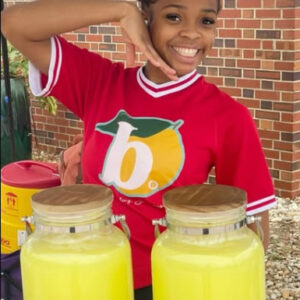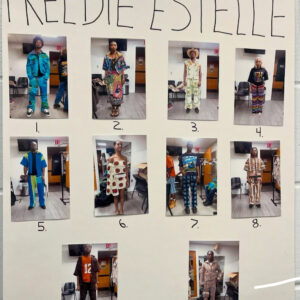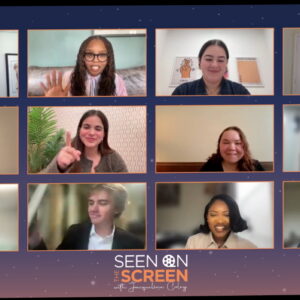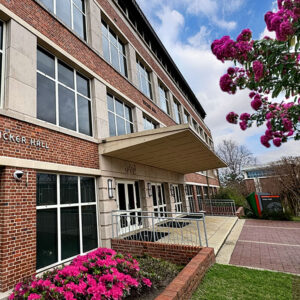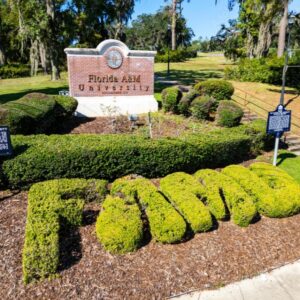Culture | October 19th, 2018
The Homecoming Issue: Out With the Old, In With The Bold
By: Journey Staff
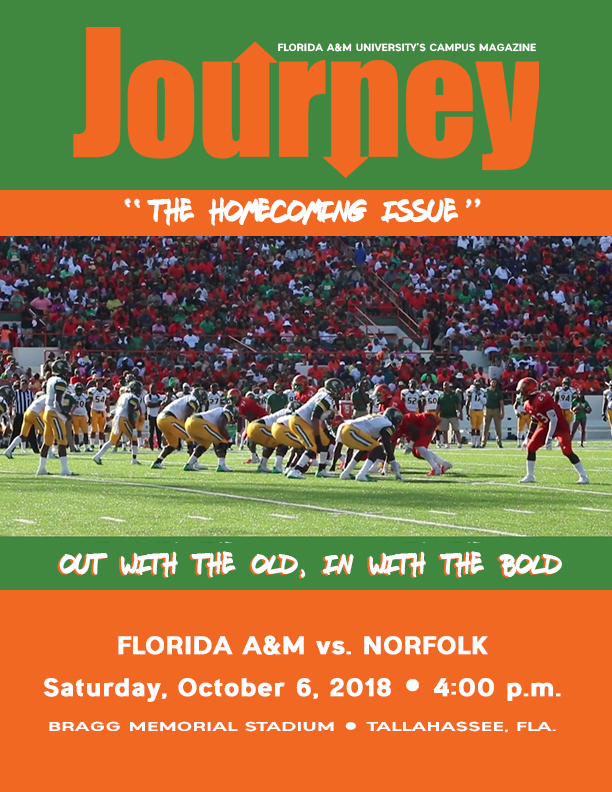
“Millennials don’t have the orange and green blood that runs through their soul,” said Barber Gardner, a FAMU graduate from the class of 1980. This rhetoric is the makings of an age old argument, one typically followed up by your grandparents’ favorite story time introduction: “Well, back in my day…”
As current students enrolled at FAMU, the narrative upon arrival on “The Hill” has been dominated by alumni reminiscing on what the university and homecoming used to be. Before even setting foot on FAMU’s campus, students have spent months and sometimes years indulging in retro college age stories of ‘way-back whens’ and ‘when I was your age’ from our parents coworkers, neighbors, play cousins and real cousins alike.
But the reflection is often accompanied by undertones of disappointment from the storyteller, one that alludes to that fact that FAMU and subsequently Homecoming is not what it used to be.
“We’ve been to a couple of homecomings as alumni, and it feels like the event has gone down a little bit,” said Derald Calvin, a 2002 alum who has since visited homecoming with his wife Sheronda, a fellow FAMU alumna.
“People are not out as much walking and talking and socializing. Some of the vendors aren’t there like they used to be. You don’t see them out tailgating as much. It was really truly an event while I was in school, and I was really looking forward to coming back as alumni, and it’s changed for me,” Calvin finished.
Cover by Malkia Peterson & Alphonso Robinson
In the last two decades, the only tangible,major changes that have occurred to the homecoming schedule is the re-routing of the parade– which formerly went through Frenchtown–and the addition of several new events like “Taste of a Rattler” and the “Color Run.” Some of these changes have, of course, stirred controversy among alumni about the traditional values of the weeklong event.
“The world changes so homecoming has to change; It can’t be exactly what it was in 1979 or 1989 or when I was in school in the 2000s,” said Kanya Stewart, Assistant Director of Media & University Relations for the Office of Communications. Stewart manages several official university social media accounts and communicates regularly with alumni through email and their Facebook group about all things FAMU–especially homecoming.
“[With] the homecoming parade, at first people were concerned. They wondered ‘why did we reroute it?’ But once we did, they understood it. I think it’s just a learning experience and opening people’s minds. Because many people saw it as, we want the community to experience FAMU, but what we have to work on is bringing the community to our campus. And since we’ve done that we’ve seen different types of people coming out, more chatter on social media from outside of FAMU about the parade, different participants in the parade than we might have seen before,” Steward said.
She continued, “I think we most often see the questions, ‘why did we change this?’ or ‘why did we change that?’ Our job is to show them why so when they get here, they’re convinced.”
The fundamentals of the homecoming affair may have not drastically changed; however, internally, there has been a conscious shift within the organizational approach of planning this major event, which may be attributed in part to the atmospheric evolution of the week.
To understand homecoming one must take into account what it takes to plan this massive undertaking that brings tens of thousands of people to the university every October. It takes two committees, a number of faculty members, and several outside vendors and agencies to make homecoming possible. But ultimately, the budget for homecoming is determined by the students.
Homecoming is largely funded by ANS fees. These fees are included in the tuition from each student which adds up to pot of money. The Student Government Association then allocates money to events, organizations, and ultimately, homecoming.
As a result, enrollment greatly impacts the amount of money SGA is able to work with. According to Senate President Rochard Moricette, $310,000 dollars were delegated to making homecoming possible this year, up $20,000 from last year’s allocation and triple the homecoming budget in 2016.
It is then up to the university homecoming committee and the student-led homecoming committee to decide where that money will be spent. According to Moricette, this is the first year an official Homecoming Committee has been created in order to better organize the planning process.
The committee is chaired by none other than SGA Vice-President Robyn Seniors.
“As the chair of the student homecoming committee, I am student liaison to the campus-wide homecoming committee which is chaired by Carmen Cummings from the FAMU Foundation. I met with them every week either on Tuesday or Thursday for 2 and half hours…During that time we decided things like ticket prices and what artist we would like to procure for the students,” Seniors said.
For Seniors, the planning process for Homecoming starts in May shortly after elections and doesn’t stop until well into homecoming week. “The first step for me was forming my committee. We put out applications, and after withdrawing those, I got over 100 applications and took some time looking over those. I wanted to make sure I had an awesome committee, which I do, filled with some awesome students, about one or two from each class,” she finished.
The student led-committee is comprised of 11 students from across the campus, with only three of them being SGA-elected representatives. The committees are directly involved in all facets of homecoming, including securing talent with the help of Bryan F. Smith. Smith is the Interim Associate Vice President of Student Affairs, University Ombuds, SGA Director and a two-time HBCU graduate from North Carolina A&T as well as FAMU.
Leadership, funding and planning are several determinants of how homecoming will be revived by its attendees, yet Smith admits that a cultural shift has occurred. Aware of this divergence, SGA as well as the homecoming committee is working hard to mediate that chasm.
“I’ve seen other places that were more consistent over a number of years, so it may seem like clockwork for them, but we’re in the midst of a culture change as far homecoming. A lot people get stuck on the ‘back in the day’ but sometimes those sort of ways were not as efficient as things are now,” Smith said.
“We have a diverse population now, and that’s not talking about your direct racial bracket,” Smith added. “Some people don’t like going to club, but they still want to feel apart of homecoming. Some people only want football…what else are we offering from a social perspective? That’s what we’re trying to work on. Because when we’re asking people to come home we want everyone to come home, that means everyone with their diverse interests to come back.”
An argument then arises about the difference in values of students now versus alumni before the age of instant gratification and social media. When asked about the main attractions of a FAMU homecoming, the response from an alumni compared to that of a current student are largely disparate.
“The football game was the place to be,” said Willie Hankins a 1994 graduate of FAMU.
“When I think of homecoming I think of the game and the parade, because that was the big thing back then. People went to the concerts, that was cool; The step show was cool, but it wasn’t like a huge deal. Everyone was trying to get tickets to go to the game because they wanted to see the band, they wanted to go out, walk around, congregate with your friends…,” alumna Sheronda Calvin added.
When asked the same question, fourth year chemistry student Stephanie Rivera-Correra replied, “I feel like some of the best parts are just the events, like the concert, comedy show, just the things that are put on for students to enjoy themselves.”
“I think [the football game] is one of the events, but it probably wouldn’t be considered the ‘Oh this is the main event I’m going to,’” fourth year pharmacy major, Brianna Taylor said. “But it’s definitely still taken into consideration.”
While most current students don’t see the football game as top priority, the consensus remains the same: to enjoy FAMU Homecoming you have to attend the game.“I don’t know about main focus,” fourth year business administration student, David Bargamento said. “But the football games are always important for homecoming. That is the culture, the football game is a must.”
A ‘splintering’ effect has occurred at FAMU homecomings. SGA Director Smith argues that social media and the growth in the number of tangent events may be cause for the change in atmosphere that some alumni are feeling.
“Things change, we have more opportunities to do more things now. Things are splintered because now you have clubs, [many students] are public relations gurus and you can promote things. You all are accustomed to having a plethora of things to do, you’re more diverse with your thoughts a lot more than we were so it takes a lot more to entertain [students]. And that’s not your fault that’s just what technology does,” Smith said.
He continued, “But I think you all are just as excited as my generation was. Maybe in a different manner. Maybe we didn’t have 12 clubs to choose from and artists at eight of those clubs. We couldn’t reach 10,000 people in five seconds by hitting send on a phone to notify those people. That’s the only thing, we had more centralized activities before, and that’s at no fault of the current students. Things were typically on campus and at most you may have had the Moon. More students lived on campus back on the day, so it’s not a bad thing it’s just how it is.”
As the world has evolved, homecoming has had to evolve with it to meet the needs of its diverse population. While social media is often praised for its connectivity and inclusivity it also has a role in the the deterioration of tradition and the authentic communal spirit central to homecoming.
However, that is not to say that all things are headed for ruin. Students and faculty are privy to this shift and diligently working towards reinstating what technology may have undermined.
As a third generation Rattler, Homecoming Committee Chairman Robyn Seniors is aware of the mistakes in the past and attests to the fact that things are not as they once were.
“The difference this year is the planning. We plan because we care, and I plan because I care about FAMU’s reputation and FAMU’s legacy. I ultimately want to send my kids here and FAMU is only sustained by the things we do. Homecoming is the time where we can showcase all that FAMU is and all that we can offer to the community. That is why I think things will be different this year and homecoming will have a different energy,” Seniors finished.
HBCU homecomings across the nation have transformed into a jam packed celebrations featuring top name celebrities and even grander events each year. Admittedly, competition between universities have become increasingly visible as some values within homecoming have come to include the importance of ‘wow factor’ as opposed to celebrating tradition. A number of things are to be credited with that change, but no one is to blame but time.
Even so, whether they graduated twenty years ago or are matriculating through college right now, the love for FAMU is always there. No matter the concert lineup, event schedule or reason why attendees are celebrating, the meaning of being a Rattler continues to shine through.
“I graduated in 1980 and the experience is marvelous and something you look forward to every year,” alumnus Barbara Gardner said. “The faculty treated you like you were their own children. I feel overwhelmed just being in the presence of everyone during homecoming. Every year I go makes me want to be back in school. I feel proud to be a Rattler. Orange and green blood runs through my veins.”
For most Rattlers, the love for their school runs generations deep. Attending Florida A&M is a tradition, which makes homecoming in general feel like a huge family reunion. For some, it is exactly that.
“For me, FAMU is really all about family, because, my entire family went there,” 2004 graduate, Melissa Mitchell said. “All of my memories are wrapped up in moments seeing all of my cousins, my sisters, my mom, my dad, FAMU is literally in my DNA.”
While opinions vary on what homecoming may look like to Rattler’s through the ages, the common denominator continues to be that this week is a celebration of family.
“I think the hype for FAMU’s homecoming is so big because of our brand,” third year political science major, Melissa Lavoile said. “They know us not just as a party school, but you know we work hard. They know FAMU is an environment for fun, learning, and it’s like a family. And so the artists we bring, the people we bring, I think that’s what makes FAMU homecoming so great.”
Words by Karlyn Sykes, Aiyana Ishmael, A’nire Glenn and Kayiah Clarke
Research supported by Marlene Bennett, Daniel Londono, Titilayo Okuway, Joanne Jean and Meche LeFlore
